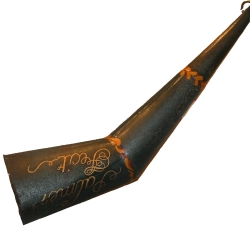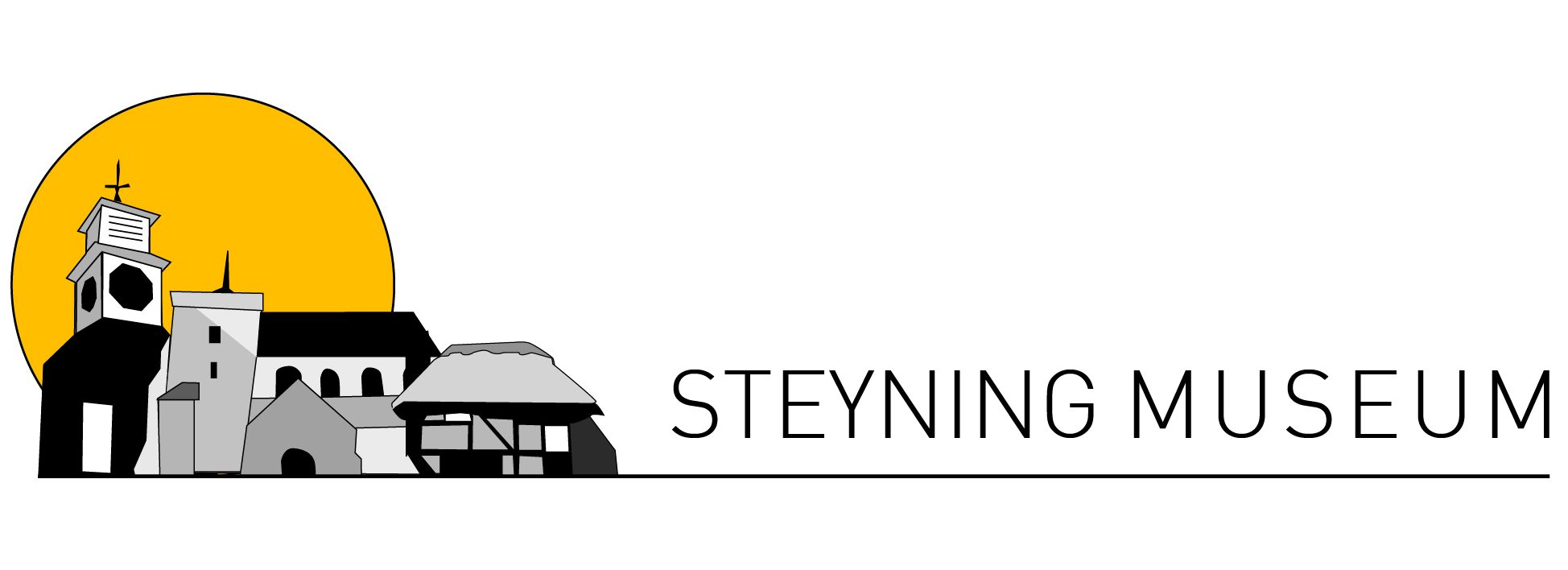
The Ashurst vamping horn is one of only six to have survived in England.
It is more like a megaphone than a musical instrument. It was used in Ashurst church to lead the choir. Mrs W Dumbrell recalled in 1955 that her grandfather used to “play” the vamping horn to amplify his voice and lead the singing of hymns and psalms. The horn is made from tin plate. It is about 2ft 7ins long. About eight inches from the widest end there is a mesh of wires.
The vamping horn was invented in 1670 by Sir Samuel Moreland. He demonstrated it to King Charles II in the Mall, who heard him clearly at 850 yards. The King ordered some for his ships and three very large ones for his castle at Deal. Originally vamping horns were used as megaphones for communication at a distance over one mile and for public address such as fire alarm, parish events and the banns of marriage. Some were up to seven feet long. Vamping horns were adapted for use by church choirs but fell into disuse as organs were installed in village churches towards the end of the 19th Century.
The Ashurst vamping horn itself tells us “Palmer fecit, 1770” (Made by Palmer, 1770). The painting on the horn and the inscription “Praise him upon the strings and pipes” is 20th Century. It is on loan to Steyning Museum from the parish church of St James, Ashurst, where a replica is on display.
